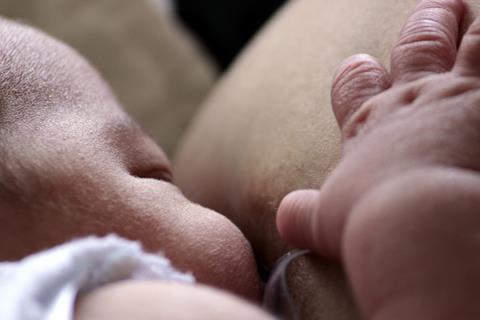A University of Massachusetts Amherst nutrition scientist who has spent his career studying breast milk has demonstrated how beneficial microbes in the gut of infants use nitrogen from human milk to support paediatric nutrition and development.

“The molecules in breast milk not only feed the baby but also feed the baby’s microbiome,” says David Sela, associate professor of food science and director of the Fergus M. Clydesdale Center for Foods for Health and Wellness. “This changed the way people think about the role of human milk in infant nutrition.”
Microbes that feed on breast milk play key roles in an infant’s growth, from jump-starting the immune and digestive systems to aiding in brain development. The molecular underpinnings of these processes, however, are not well understood.
Beneficial bacterium
More than a decade ago, Sela and his team noticed that Bifidobacterium infantis, a beneficial bacterium that colonizes the infant gut, had the ability to degrade urea, a molecule that mammals excrete as waste in urine.
“There’s a lot of urea in breast milk and since it’s typically excreted out of the system, and this major colonizer has the ability to degrade it, we thought it’s possible that the microbes are utilizing this waste product as a nitrogen source within the infant gut,” Sela says.
In a paper published in the journal Gut Microbes, senior author Sela describes how B. infantis utilizes urea from human milk to recycle nitrogen in the infant’s gut microbiome. The paper lays the groundwork for applying this discovery to improve infant health around the world by identifying molecular targets to improve nitrogen metabolism efficiency.
Nutritional interventions
“This might lead to nutritional interventions and diagnostic tools to address infant nutrition, not only in the Western world, but also in developing countries,” Sela says.
“If we have a better understanding of how the microbiome contributes to nutrition, we have a better understanding of how to provide nourishment to not only healthy infants but also infants who are preterm or are more predisposed to diseases, sickness and conditions that are deleterious to their health.”
After years of research, Sela and his team in the Sela Lab have achieved an understanding of the process from the microbial side, which was “the overarching objective of the project.”
Since 2021, Sela’s research has been funded by a five-year, $1.69 million grant from the National Institute of Child Health and Human Development.
Nitrogen source
To test their hypothesis, researchers in the Sela lab, including lead author Xiaomeng You, a graduate research assistant, demonstrated that the B. infantis bacteria, when fed urea, were able to use it as a nitrogen source.
They then tracked the urea nitrogen with a stable isotope. “It gets incorporated into all kinds of bacterial products that the bacteria makes, and that was really insightful,” Sela says. “It gives us the strongest evidence that the bacteria is utilizing urea nitrogen for its basic metabolism.”
The next step is to examine the process in the human system – “looking at mom’s milk, infant growth and development, and microbiome function as it pertains to urea utilization,” Sela says. “If we want to have clinical or nutritional relevancy in humans, we have to understand how it works in babies.”







No comments yet